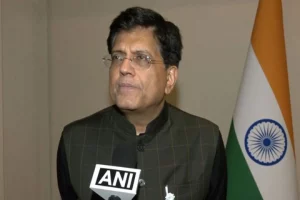Kathmandu: Kul Bahadur Tamang, chairperson of Ward-9 of Panchkhapan Municipality in eastern Sankhuwasabha district, has never seen the havoc created by floods as massive as he saw this June.
Floods killed three people while 18 went missing in the municipality. Most of the missing are workers employed at a hydropower project being constructed in the ward.
“Older people say they had seen similar devastation in 1933 but I have never seen such destruction caused by floods in my proximity till date”, Tamang, 45, told India Narrative.
Besides the loss of lives many hydropower projects built in Hewa Khola – the local stream, were badly damaged by floods including one under-construction project whose workers were swept away in the deluge.
“Even in 2015, there were floods in the Hewa Khola but not as devastating as one that we witnessed this year”, Tamang said.
According to him, several landslides blocked the stream in its upper part and the sudden burst led to loss of lives and massive damage to downstream infrastructure including hydropower projects which were damaged by debris brought by overflowing rivers in mid-June when the monsoon started in Nepal.
According to Independent Power Producers’ Association of Nepal (IPPAN) – a representative body of the private sector power developers in the Himalayan country, the flooding in eastern Nepal damaged the infrastructure of 30 hydropower projects—13 operating and 17 under-construction. The hydropower developers say Nepal is witnessing its heaviest floods that they can recollect.
IPPAN says, the estimated loss from the damages stood over Nepali Rs 8.5 billion ($64.23 million). The 13 operating hydropower projects faced an estimated loss of Nepali Rs 5.92 billion while the under-construction projects incurred a loss of Nepali Rs 2.62 billion. Their combined generating capacity is 460 MW, says IPPAN.
These hydropower projects exist on Hewa Khola, Phuwa Khola, Sabha Khola, Ingwa Khola, Kabeli river, Ishuwa Khola and Irkhuwa Khola. Several hydropower projects are being built on the same river.
“It was the heaviest flood ever in the rivers and streams where our hydropower projects were damaged,” said Ganesh Karki, president of IPPAN. “Before the floods, the region saw extreme drought followed by intense rainfalls triggering massive floods which badly damaged the structure of hydropower plants.”
He said that the incident showed the risks to hydropower projects from floods and landslides possibly triggered by climate change. “Even though we usually build the structure to sustain a certain degree of floods and landslides, no structure could have withstood the massive flooding that occurred in eastern Nepal in the middle of June,” said Karki.
In 2021 also about two dozen hydropower projects in the country were damaged due to floods and landslides causing damages worth Rs 10 billion, according to IPPAN.
Nepal is witnessing increased and erratic incidents of floods and landslides and many experts blame these to climate change.
The World Bank said in its Nepal Development Update report in October 2022 that climate change has been causing floods and landslides in high numbers. “The number of flood events has doubled in recent years; storms, erosion and landslides are also on the rise, resulting in the loss of life and livelihoods,” it stated.
According to the report, the mountains are warming quicker than plains, triggering melting of ice and permafrost and an increase in the risk of landslides. Nepal ranks 10th among the most affected countries in the world, according to the Global Climate Risk Index 2021, prepared by Germanwatch, a non-government organisation based in Bonn, Germany.
Nepal’s hydropower projects also face the risk of massive damage as many of them are run-of-the-river and the infrastructure has been built in hilly areas prone to landslides, the World Bank report said.
According to the Climate Risk Country Profile of Nepal prepared by the World Bank in 2021, notably, around 90 per cent of Nepal’s electricity generation is sourced from hydropower. “This represents a potential vulnerability in the context of an uncertain future precipitation regime, glacial melting, and potential increases in the risks of landslides and Glacier Lake Outburst Floods (GLOFs),” it said.
Experts said that climate change was the likely reason behind massive flooding in the middle of June. “Nepal is seeing high intensity rainfalls at localised areas of hilly and mountainous regions because of climate change,” said Madhukar Upadhyay – an expert on watershed issues and climate change. “Nepal’s hilly soil cannot withstand high intensity rainfalls triggering landslides and floods with a lot of debris.”
Nepal’s largest under construction water supply project—Melamchi Water Supply Project also faced heavy damages two years ago as debris brought by the overflowing stream submerged its headworks. When the incident happened, the project was on the verge of completion after two-decade long construction with multiple deadline extensions and change of contractors.
The Melamchi Water Supply Project is supposed to supply 170 million litres of water daily to the Kathmandu Valley, which often faces scarcity of drinking water in the winter, by diverting the Melamchi River in the Sindhupalchok district, as part of its first phase.
Hills and mountains occupy Nepal’s 80 per cent landmass. Experts said that damages to Melamchi and half-a-dozen hydropower projects in eastern Nepal this year demonstrated the degree to which Nepal is vulnerable to earthquakes and rapidly-changing weather patterns.
This vulnerability has surfaced when Nepal is aggressively pursuing mega hydropower projects, highways, railways among others, raising questions about the fate of these big projects under rising climate uncertainties.
“In the past we used to talk about potential impact on hydropower by the Glacial Lake Outburst Floods (GLOFs),” said Upadhyay. “What we are witnessing now is high intensity rainfalls in a narrow space of hilly region which the sloppy soil of the hill cannot withstand, leading to landslides and floods.” He added that all projects built on a single river are vulnerable to climate disasters.
Potential impact of climate change-induced disasters on hydropower projects has emerged at a time when Nepal is aiming to enrich itself by generating and selling the surplus hydropower to India and other countries in South Asia.
Nepal’s generation capacity has increased to around 2,700-MW and it aims to boost the generation to 15,000-MW by 2030. India, which has been buying power from Nepal since November 2021, has announced a big buy of Nepal’s power in the next decade.
Recently, Prime Minister Narendra Modi announced at a joint press meeting with visiting Nepali Prime Minister Pushpa Kamal Dahal ‘Prachanda’ on June 1 that the southern neighbour would buy 10,000-MW of electricity from Nepal in the next 10 years.
Two sides initiated the 25-year long long-term power sale agreement during Dahal’s visit. India’ state-owned companies—SJVN Ltd and NHPC Ltd have secured deals to develop a number of hydropower projects in Nepal.
In fact, SJVN has been developing a 900-MW Arun 3 Hydropower Project in eastern Nepal and it has also been licensed to develop 679-MW Lower Arun on the same river. SJVN and the Nepal Electricity Authority have agreed to develop a 490-MW Arun-4 Hydropower project on the same river.
NHPC has been licensed to develop the 750-MW West Seti Hydropower Project along with 450-MW Seti River-6 project in western Nepal. It also signed Memorandum of understanding with Vidyut Utpadan Company Limited to jointly develop Phukot Karnali Hydro Electric Project (480-MW) in Nepal during the Nepali Prime Minister’s recent visit to India. Indian private company—GMR Energy is working to develop the 900-MW Upper Karnali Hydropower Project in western Nepal.
The Arun-3 project faced a reality check in late April after a massive landslide occurred close to the project site partly blocking the Arun river at Phaksinda area of Makalu Rural Municipality of Sankhuwasabha district.
The landslide debris blocked the diversion tunnel of the project and filled the 26-metre high dam creating a nearly two kilometres long lake, raising the risk of flash floods that could engulf villages downstream, The Kathmandu Post reported.
Considering such risks, the World Bank called for building resilience against the climate change impact on the hydropower sector in its Country Climate and Development Report released in September last year. “Building such resilience will be key for Nepal’s energy security and energy future,” the report stated.
“As high intensity rains are concentrating on one or two river basins, there is a need for localised weather forecasting,” said Upadhyay. “With a stronger early warning system about the weather and floods, developers of hydropower projects can take precautionary measures to save infrastructure.”
Binod Pokharel, associate professor at Central Department of Hydrology And Meteorology, Tribhuvan University, stressed that each hydropower project needs to install automatic hydrological and weather stations to forecast localised weather patterns and water flow data of the river where the project lies. “Installing these infrastructure is not so costly for the hydropower developers who invest billions of rupees to develop the project,” he told the India Narrative.




















